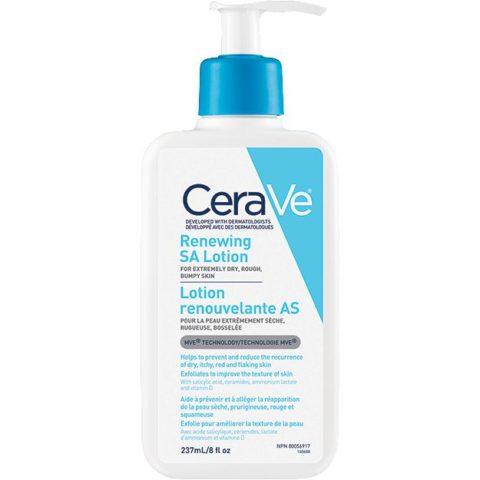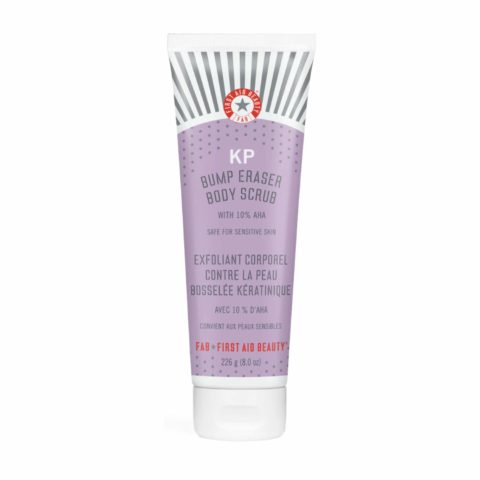Everything You Need to Know About Keratosis Pilaris
Ah, keratosis pilaris. It’s one of the most common skin conditions in the world and yet it remains one of the most annoying. Most often, keratosis pilaris (KP) is a genetic condition and is seen in the form of dry, rough patches and tiny little bumps on the backs of arms and thighs due to a lack of natural exfoliation. And while you may not necessarily be able to cure KP (and you shouldn’t be trying to, anyway — it really is completely harmless and normal), if you’re self-conscious about the bumps, or you’re finding them to be a bit itchy this time of year, there are certain things you can do to minimize their appearance.
Read on to learn everything you need to know about keratosis pilaris, straight from a pro dermatologist.
What is keratosis pilaris and what is it caused by?
“Keratosis pilaris is a common skin condition characterized by little, rough bumps often found on the upper arms, but can also occur on the thighs and face,” says Dr. Monica Li, a dermatologist and clinical instructor at the University of British Columbia’s Department of Dermatology and Skin Science. “It arises from buildup of keratin leading to plugging of hair follicles and subsequent development of small bumps.”
How common is keratosis pilaris?
Very! It affects 50 to 80% of teens and approximately 40% of adults worldwide.
Is there only one type of KP?
Nope. “The caveat [with keratosis pilaris] is that there are different types, so it’s best to see a board-certified dermatologist for proper assessment and diagnosis, as well as determine an appropriate, individualized treatment plan,” suggests Dr. Li. “Management options for keratosis pilaris range from over-the-counter skin care products, to topical prescriptions, to in-office laser treatments. Keep in mind that everyone is different — some may need to try different treatments before finding one that works for them.” Some types of KP can go away on their own over time, but it may take years.”
Does keratosis pilaris need to be managed?
Not at all, but it can be itchy and more noticeable in the winter months, when the air (and your skin) is dry, in which case you may choose to address it.
What products can be used to keep KP at bay?
“There are various over-the-counter products that can improve the texture and appearance of keratosis pilaris,” says Dr. Li. “KP can benefit from and improve with a combination of exfoliation and hydration. For exfoliation, alpha- and beta-hydroxy acids – such as salicylic, lactic or glycolic acid – can help to smooth the skin. Be careful not to over-exfoliate, though. Stop if the skin becomes dry or irritated.” And once you’ve exfoliated, you’re going to want to add some moisture and hydration back into the skin. To do this, turn to “hyaluronic acid, ceramides and glycerin — ingredients that support the skin barrier in maintaining moisture at the surface to keep the skin supple, and also soothe possible itch and dryness seen with keratosis pilaris.”
Below are some products we love for treating keratosis pilaris.
The post Everything You Need to Know About Keratosis Pilaris appeared first on FASHION Magazine.




